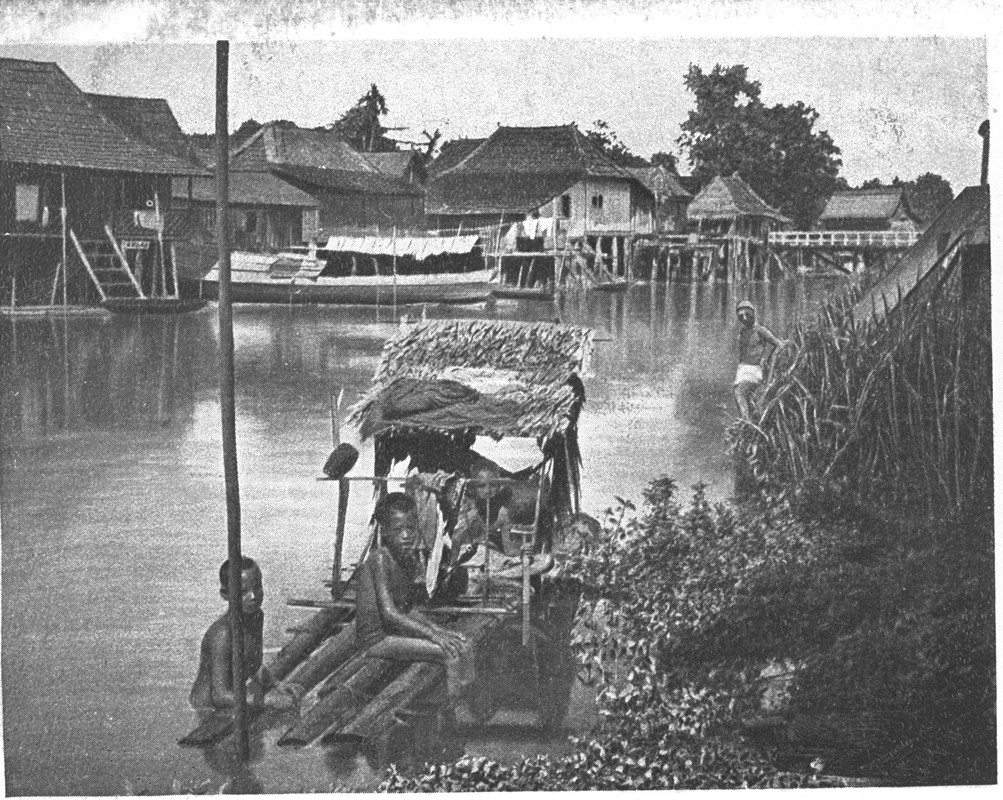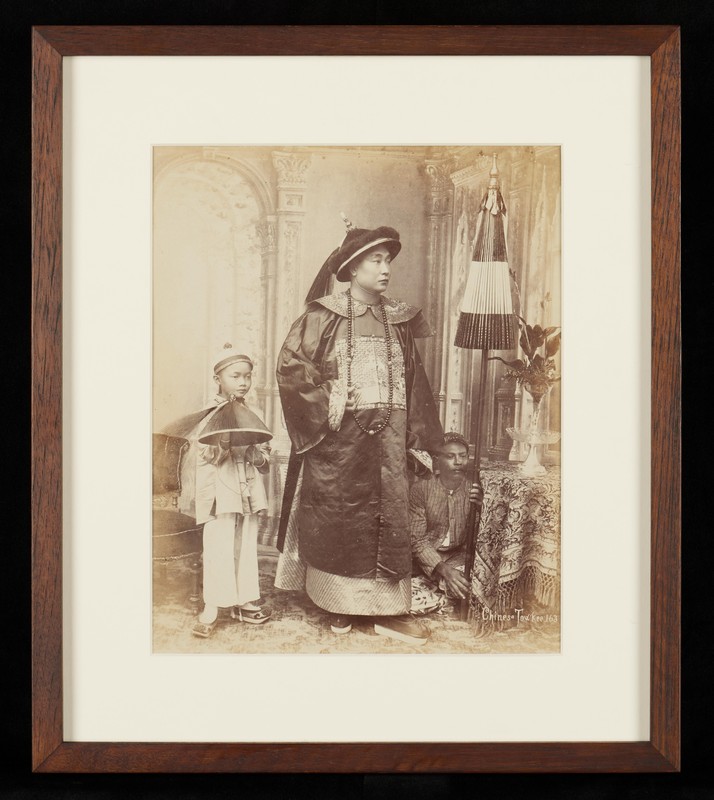Hokkien temples in Singapore
Before Thian Hock Keng — the most important Hokkien temple in Singapore — was founded, the Heng San Teng cemetery and temple established by prominent businessman See Hoot Kee (1793–1847) was the leading institution of the Hokkien community.
When See returned to Malacca in 1839 to take over the running of Cheng Hoon Teng Temple, well-known philanthropist Tan Tock Seng (1798–1850), who was also from Malacca, became the new leader of the Hokkien community. It was also in 1839 that Tan led a group of prominent merchants to build Thian Hock Keng in Telok Ayer Street. The temple was officially completed in 1842.
From the start, the leaders of Thian Hock Keng demonstrated that their vision for the temple transcended dialect groups. Through the worship of sea goddess Mazu, the temple aimed to connect and unite the entire Chinese community in Singapore. In the stone stele record of the temple’s construction dating back to 1850, Tan and other directors referred to themselves as “tang ren” — that is, Chinese people — rather than Hokkiens. This approach gradually led Thian Hock Keng to become a leading institution in the local Chinese community, unlike the limited social role of the preceding Heng San Teng, which served only the Hokkien community.
While Thian Hock Keng had been established as a place of worship, the temple was not merely used for religious activities. The inscription on the 1850 stone stele also stated that where Guanyin (the Goddess of Mercy) was worshipped, the temple would serve as a meeting place for “tang ren” to discuss official business – signalling its ambition to become a centre of power in the Chinese community. A plaque displayed in the temple, which features the calligraphy of Qing emperor Guangxu with the phrase that translates into “Gentle Waves Over the South Seas”, also indirectly affirmed the temple’s standing.

Early Hokkien temples in Singapore
Prior to Thian Hock Keng, earlier leaders of the Hokkien community in Singapore had founded other temples too. The Kim Lan Beo temple was built in the 1830. According to the inscription on a stone stele of Kim Lan Beo, dating back to 1839, the temple had been initiated by Tan Che Sang, Yang Qinghai, and Xu Ronghai. Construction costs amounted to nearly 1,000 dollars, and the three had donated a total of 640 dollars, making up more than half of the building funds; Tan alone had contributed 360 dollars.
It was speculated that Tan Che Sang might have been an alias of Tan Sang, a gang leader in Singapore in the early 19th century. In One Hundred Years’ History of the Chinese in Singapore, Song Ong Siang documented in English that Tan Sang (1763–1835) had been known by several aliases, namely Tan Che Sang, Tan Chi Sang, Tan Cheh Sang, and Tan Chee Sang, thus supporting the possibility.
Kim Lan Beo began as a secret society within the Hokkien community, a fraternity with 75 founding members. In the early years of modern Singapore, forming and joining gangs were crucial survival strategies. When the British colonial government declared secret societies to be illegal in 1890, Kim Lan Beo transitioned from an underground organisation to a temple that was opened to the public purely for religious purposes.
Another temple built in the earlier years was Hong San See, an important institution for immigrants from the Nan’an county in Fujian. Established in 1836 under the leadership of Neo Jin Quee (unknown–1843), it played a vital role in maintaining relationships and connections within the community.
In those days, the Hokkien community would organise street processions during religious festivals devoted to Chinese deities. During such processions, the respective patron deities of the Hong San See, Heng San Teng, and Kim Lan Beo temples — that is, Kong Teik Chun Ong, Fu De Zheng Shen (more popularly known as Tua Pek Kong), and Qing Shui Zu Shi respectively — would be taken to Thian Hock Keng, where offerings were made to them. This demonstrated that the three temples and their patron deities were highly recognised and respected.

Early Hokkien merchants also set up the Keng Teck Whay— a self-help organisation founded in 1831 — and temples such as Qing Yuan Zhen Jun Temple (1849) and Hoo Chay Beoh (1876), which housed the local deities of Changtai and Kinmen counties to watch over fellow countrymen living in Singapore.

The Keng Teck Whay association (also known as the Keng Teck Association Hall), is an exclusive mutual-aid society founded in 1831. Its former building is located to the left of Thian Hock Keng, and across the tower of Chongwen Ge. Its founders were 36 Straits Chinese middlemen who had pledged brotherhood before the Three Officials of Heaven, Earth, and Water (the Heavenly Venerable of Purple Tenebrity, the Heaven Official who dispense fortune; the Great Emperor of the Pure Void, Official of the Earth who absolves sins; and the Great Emperor of the Cavernous Obscurity, Official of Water who dispels obstructions). Each of them contributed 100 Spanish dollars to the credit foundation of Keng Teck Whay. If a member passed away or failed in his business, the association would provide financial support to his family members until they could stand on their own.
It can be gleaned from the names inscribed on the collective spirit tablet of the founding members that they were closely related to the networks of the Zhangzhou and Quanzhou communities in Malacca. Some were related to See, a Chinese community leader in Singapore and Malacca; others were descendants of Chinese Kapitans in Malacca, or heirs of leaders of Cheng Hoon Teng Temple. Despite a decrease in number of members over the years, the descendants of the Kheng Teck Whay’s members maintained a kinship that lasted a century and a half.
According to the stone stele record of Teang Thye Temple’s reconstruction, the Teang Thye Clan Association was founded by Cheang Sam Teo (circa 1805–1862) for the people from the prefecture of Zhangzhou in 1849. His son Cheang Hong Lim (1841–1893) renovated the association building in 1887 and converted it into a temple, where the local residents worshipped Qing Yuan Zhen Jun, the deity enshrined in the building since its establishment.
The temple originally had three entrances and was of considerable scale. By the 1970s, only the main hall remained. That eventually disappeared too as the temple’s popularity waned and urban redevelopment gathered pace. Its transformation from a clan association to a temple might have been inevitable as activities in the clan association dwindled. Its proximity to Chinatown, where the Cantonese community was concentrated, could also have made it challenging for the association to engage the population in that area.
Temples of subgroups in the Hokkien community
Gnoh Kung Hoo Chay Beoh, the predecessor of Kim Mui Hoey Kuan, was founded on Smith Street in Chinatown in 1876 by immigrants from Kinmen. It served to worship Chen Yuan, the Tang Dynasty commander-in-chief credited with opening up Kinmen, and his wife. Leaders of the Kinmen community set up an office within its premises soon after the temple was established. The temple was known initially as Kim Mui Kongsi and renamed Kim Mui Hoey Kuan in later years – the name “Kim Mui Hoey Kuan” first appeared in the stone stele record of the temple’s reconstruction and the stele that lists the names of donors who contributed to the temple’s reconstruction dating back to 1931. The name was not seen in the early stone stele of the temple, which is the earliest stele record of the Gnoh Kung Hoo Chay Beoh dating back to the second year of Emperor Guangxu’s reign (1876).
In 1974, the land which the temple occupied was acquired by the government, and it relocated to 72 Keng Lee Road in 1986. Kim Mui Hoey Kuan Building was officially completed in 1986, and the shrine of Chen Yuan and his wife was moved to the top floor of the building, where it continues to be worshipped today.
Whether it was Thian Hock Keng or Hong San See, the early leaders of the Hokkien temples and community all had inseparable ties with Malacca. Almost all of the founding directors of Thian Hock Keng were prominent, wealthy businessmen from Malacca, while Neo Bee Kiat, the first head of Cheng Hoon Teng in Malacca, was the elder brother of Hong San See’s founder Neo Jin Quee. This indicated that both the leadership structure and culture of Hokkien temples in early Singapore were influenced by the Hokkien community in Malacca.
Other Hokkien temples have continued to serve immigrants from their respective hometowns till today. Just as in the early years, the temples have taken on the roles of clan associations and performed social duties that go beyond being places of worship.
This is an edited and translated version of 新加坡闽帮庙宇. Click here to read original piece.
Fengshansi: zouxiang wenhua yichan licheng [Hong San See Temple: The journey to UNESCO]. Singapore: Research Centre for National Monuments, 2019. | |
Tan, Ronney, Kua, Bak Lim and Lim, How Seng, eds. Keng Teck Whay – 200 Years Of Brotherhood. Singapore: Keng Teck Whay, 2023. | |
Toh, Lam Huat, ed. Nanhai mingzhu: Tianfugong [Pearl of the South Seas — Thian Hock Keng]. Singapore: Singapore Hokkien Huay Kuan, 2010. |










